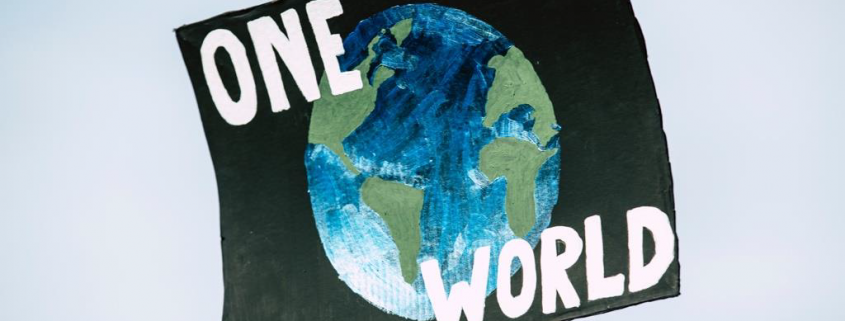The ways Indonesian and Australian schools are creating green generations
“Education is the most powerful weapon which you can use to change the world” – Nelson Mandela

Photo by Jessica Ticozzelli from Pexels
Schools play an undeniably important role in the development of young minds. Education is the main driver of technological innovation and high productivity; it can change the landscape of a nation by just educating the next generation. With climate change and deforestation set to cause devastation and loss globally, it has never been more important for schools to be bringing climate change and environmental protection into the classroom. This article will be looking at how both Indonesian and Australian schools teach children about environmental protection, their methods for creating green generations and what they need to improve on.
Why Children Should Understand Environmental Protection
Children are some of the most vulnerable members of our society to climate change. The reduction of global air quality and steadily increasing temperatures is likely to heighten the level of asthma attacks and allergies, create food insecurity, worsen pregnancy outcomes, cause developmental delays, and increase mental health problems1. Schools play an important role in educating children worldwide on how to reduce their contribution to climate change and why climate change is such a big problem. It also teaches children sustainability, which can help change the actions and impacts of entire towns. Hence governments need to establish formal and informal environmental education in schools.
Overview of Indonesia’s Environmental Curriculum
The first example of environmental education in Indonesia was in 19752. The implementation of environmental education into primary and secondary school curriculums in 19842. The objectives of environmental education in Indonesia are to create awareness, increase knowledge through experience and understanding, alter attitudes, develop skills, increase participation and the ability to evaluate2. The Indonesian government has been very proactive in implementing environmental education, but overall scientific and environmental knowledge is lacking across the nation.

Photo by Markus Spiske from Pexels
Indonesian high school students lack general knowledge about climate change, describing that the “Greenhouse Effect”, and global warming are caused by the overuse of glass in houses4. An international assessment test in 2016 found that Indonesian school children are well behind the rest of the world in science-based knowledge4. The Indonesian government has put forward environmental education initiatives for over 40 years, but these policies are not educating children well enough. Curriculum reform is needed to make sure that children are being taught about the environment and climate change effectively and accurately across the nation.
A Clash of Culture and Change
The culture of Indonesia has also added challenges for integrating knowledge from schools into local communities. There is a high presence of respect in Indonesia and social norms and the strength of a family is based around children respecting their parents4. This means that in Indonesian households, children have a very hard time changing their parent’s actions. That means that even if a child is well taught about environmental protection, it is unlikely to change the behaviours or attitudes of their parents. This is a complex issue that will not be solved overnight but providing both children and adults with access to information about the environment will help increase the sustainability of Indonesian households. Indonesia has a long way to go before being considered sustainable, but the government and Indonesian people have set very good foundations to get there.

Photo by Karolina Grabowska from Pexels
Overview of Australia’s Environmental Curriculum
Australia has a very long history of environmental education, going back 60,000 years passed through generations of First Nations People. Since European settlement, the first example of environmental education is in 1973, which was later reviewed and altered in 20023. The Australian curriculum looks at promoting sustainable practices and giving children hands-on experience. In recent years the value of Indigenous knowledge has begun to be brought into schools and extracurriculars. Although Australia globally has a very high level of environmental education in its schools, the level at which schools are implementing green initiatives varies greatly across the states. Wealthier states such as Victoria, New South Wales and the Australian capital territories are ahead in sustainability programs. Many schoolyards contain vegetable patches, teach composting and taught water-saving strategies5. In poorer states like Queensland, many teachers are unaware of the 2008 directive to incorporate sustainability across all subjects5. Although doing well, Australia still has a way to go before sustainability is taught equally across all states, which will be sped up through increased funding to schools in Australia’s poorer states.

Photo by Katerina Holmes from Pexels
Sacrificing meat for the climate
Agriculture, specifically meat production, contributes 13.5% to Australia’s greenhouse gas emissions. Annual meat consumption per capita is 110kg in Australia, making it one of the top countries in meat consumption6. Having meat in most meals each day is part of the Australian culture but highly damaging to our environment. This is largely due to a lack of education about how harmful large amounts of meat consumption is. Raising awareness through schools needs to be increased in Australia, with young people being able to positively influence their household.
Summary
Although Indonesian schools would significantly benefit from an updated curriculum and Australian schools from more funding into their education, both are great examples for the rest of the world. Although a young nation, the Indonesian government has put in good foundations to raise green generations, which is more than a lot of other developing nations. Australia has integrated sustainability well into their curriculum and the social change is notable, but there is room for improvement and room to help other nations, like Indonesia, to reach their goals through funding and the sharing of knowledge and resources. Both nations are challenged by the balance of culture and conservation, but both are doing their part to see a better world for the next generation.
Alice V Bertram
The University of Melbourne
ACICIS Intern at the Environment Institute



